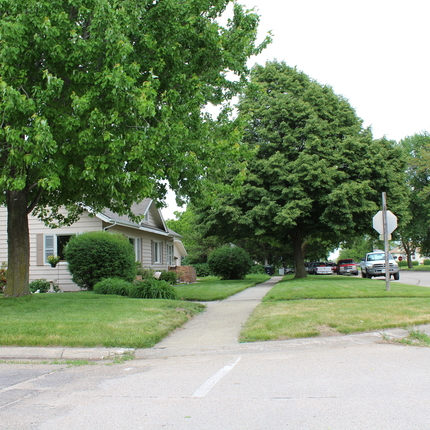By Jordan Rasmussen, former staff member
Your rural voice is a collection of testimony, official comments, appropriations requests, and other formal communications from the Center for Rural Affairs to government departments, officials, and more. Each item was written and delivered by our staff on behalf of you, our constituent, as we work to build a more vibrant future for rural communities.
This testimony was submitted in support of Nebraska Legislative Bill (LB) 276 to the Revenue Committee on Feb. 12, 2019.
The need for additional state revenues
Rural Nebraskans recognize the value of the education, health care, and public safety services which their tax dollars provide. These are the services that underpin and help sustain our rural communities and residents. Yet, these residents also recognize the state of Nebraska is not fulfilling its obligation to help pay for these services, especially in funding our K-12 school systems.
Years of tax cuts have eroded the state’s ability to make necessary investments in services that are vital to rural Nebraska communities. Over the last decade, these tax cuts and exclusions, estimated by the Legislative Fiscal Office to have resulted in a more than $810 million loss in revenues from 2017 to 2018 alone, have obstructed the state’s ability to meet its obligations to pay for basic services. Tax cuts, coupled with the rapid rise in land values and the precipitous drop in state funding for local services, have forced schools and local governments to rely on property owners, particularly those who farm and ranch, to shoulder a disproportionate share of this funding burden. New revenue sources are necessary to correct this imbalance.
LB 276 seeks to address this imbalance by bringing in additional revenues—revenues needed for the state to fulfill it obligations, provide real property tax relief, and hedge against ongoing budget shortfalls and demographic shifts.
Stagnant farm prices
A recent outlook report from the Congressional Budget Office suggests that commodity prices will remain low. It is anticipated that corn prices will continue to fall below $4 a bushel for nearly a decade. The report also predicts that soybean prices will not surpass $9 per bushel until 2023.
Despite the ever-growing productivity of Nebraska’s farm acres, the ongoing pattern of low commodity prices will continue to tamp back the state’s revenues, and the state’s ability to fund priorities like education, roads, and public safety. Additional revenues are required to meet these obligations.
The aging population
Nebraska counties, and the state as a whole, have entered a phase of significant demographic change. As presented in a report to the Nebraska Legislative Planning Committee in 2013, the state’s population of those age 65 years and older is expected to reach nearly 419,000 by 2030. This estimate presents a nearly 70 percent growth in this age demographic over two decades.
The aging of the state’s population will have a considerable impact upon the revenues that will flow into the state’s confers. As more Nebraskans reach retirement age, both incomes and spending patterns will shift, resulting in declines in income and sales tax revenues. Moreover, these lower revenues will be further stretched by the needs of Nebraskans as they age, including the need for long-term care. It is estimated that Medicaid covers one in two Nebraskans in long-term care facilities. In order to provide the care necessary for our aging population, the state must continue to identify and collect the revenues required to pay for these services. LB 276 seeks to contribute to the collection of these revenues.
Without benefit to everyday Nebraskans
Against these economic and demographic realities, ongoing budget shortfalls, and crippling property tax burdens, significant exclusions remain in Nebraska’s tax code. The state’s current S Corporation/LLC tax exclusion, as passed in 1987, reduced revenues by nearly $83 million in 2018. This occurs because S Corporations and LLCs are not required to pay taxes on income generated from goods or services sold outside of Nebraska, even if the income is not being taxed in another state. These are tax dollars, on income earned, left on the table, while property taxes continue to push farmers and ranchers to the brink and our communities continue to struggle to obtain needed services.
Moreover, the S Corporation and LLC income exclusion does little to benefit everyday Nebraskans. The tax benefit goes to residents who earn money from other states through S Corporations or LLCs, but this does not mean that jobs are created or that economic activity benefits Nebraskans. Instead of incentivising job creation and investment in our communities, this provision encourages the generation of income outside of the state. This is income that goes untaxed in Nebraska, but that would be taxed in nearly all other states. The S Corporation and LLC exclusion is a lose-lose situation for Nebraska, which LB 276 seeks to correct.
Conclusion
As prospects for Nebraska’s agricultural economy remain bleak and our demographics change, additional revenue streams will be necessary in order to meet the state’s obligations and bring balance to our tax system. The Legislature has a responsibility to respond. By ending the S corporation and LLC exclusion as proposed in LB 276, new and necessary revenues will come to the state of Nebraska. We ask the committee to move LB 276 to the floor for further debate.
Additional sources
Major Tax Changes since 2006: Impact on FY17-18 Revenue Base. Legislative Fiscal Office. Dec. 14, 2017.
Addressing the Long-Term Care Needs of Nebraska’s Aging Population through Home and Community-Based Services. University of Nebraska-Omaha, Jerry Deichert and Christopher Kelly. 2013.





